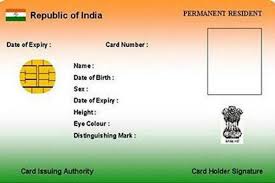The Aadhar card is a crucial identity document in India, serving as proof of identity and address for millions of citizens. It contains essential details such as the individual's name, Aadhar number, photograph, and biometric data. However, when applying for an Aadhar card or downloading an electronic version, one may come across the Aadhar card blank format. Understanding its structure, purpose, and significance can help individuals manage their identification documents effectively.
What is the Aadhar Card Blank Format?
The Aadhar card blank format refers to a template or pre-formatted layout that includes placeholders for personal details. This format is used for official or reference purposes and is typically available in digital form. It ensures consistency in the structure of the Aadhar card while allowing customization for specific needs.
Key Elements of the Aadhar Card Blank Format
To understand the importance of the Aadhar card blank format, it is essential to break down its key components:
1. Header Section
The header of the Aadhar card format includes the official Government of India logo and the Unique Identification Authority of India (UIDAI) emblem. These elements authenticate the document and confirm its legitimacy.
2. Aadhar Number Placeholder
One of the most critical components of the blank format is the placeholder for the 12-digit Aadhar number. This number is unique to every individual and is issued after successful verification of biometric and demographic details.
3. Personal Information Fields
The format includes designated spaces for personal information such as:
● Full name of the cardholder
● Date of birth
● Gender
● Residential address
● These details are filled in once the Aadhar card is officially issued to an individual.
4. Photograph and QR Code Section
Aadhar cards contain a photograph of the individual, making them a valid proof of identity. The blank format includes a placeholder for the photo, ensuring a standardized design. Additionally, a QR code section is available, which, when scanned, reveals encoded information about the cardholder.
5. Biometric Data (Not Visible in the Blank Format)
Although biometric data such as fingerprints and iris scans are an essential part of Aadhar authentication, they are not visible in the blank format. This data is securely stored in UIDAI's database and is used only for verification purposes.
6. UIDAI Contact Information
The bottom section of the blank format often contains UIDAI’s contact details, including the helpline number and official website, enabling users to seek assistance if needed.
Why is the Aadhar Card Blank Format Important?
The blank format serves multiple purposes, including:
● Standardizing the layout for new Aadhar card issuance.
● Providing a reference template for digital Aadhar downloads.
● Assisting in error corrections and reissuance processes.
● Ensuring consistency in card design across different states and regions.
Final Thoughts
The Aadhar card blank format plays a crucial role in maintaining uniformity in the identity verification process. By understanding its structure and significance, individuals can better navigate Aadhar-related procedures. At ID TEMPLATE, we offer high-quality solutions to assist individuals in managing their identification documents efficiently.





Comments